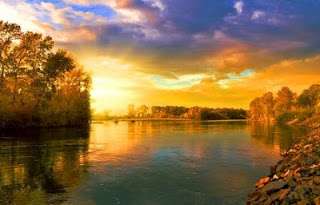Indira Gandhi National Park: Beauty of Wildlife
The Indira Gandhi Wildlife Sanctuary should be called the herbical botanical treasure. Yes, in this National Park, the specialty of the extinct species of milch animals enjoys special protection.
This National Park is also known as Topslip. In fact, the Indira Gandhi Wildlife Sanctuary is the wildlife conservation area. This National Park of Coimbatore, Tamil Nadu, India is very exciting. Experts believe that in the 19th century this local sanctuary emerged from a local custom.
This National Park, spread across Pollachi, Velparai and Udumalpet, is a major part of Annamalai hills. Spread over an area of about 958 sq km, this National Park is a truly spectacular and unsurpassed gift of nature.
Particularly that this bird's park was formerly known as the Animalai Wildlife Sanctuary. It was duly established in the year 1974 as a grand-divine sanctuary.
The country's former Prime Minister Indira Gandhi visited this National Park in the year 1961. So it was later known to be known by the name of Indira Gandhi.
Particularly that Indira Gandhi Wildlife Sanctuary is a major part of the Western Ghats area. Particularly that the Indira Gandhi Wildlife Sanctuary area is very high and low.
There is a height of 340 meters above sea level, so the height somewhere is 2513 meters. Especially, more than a dozen mountain peaks are the glory and glory of the Indira Gandhi Wildlife Sanctuary. The shades of these mountain peaks are superficial and wonderful.
In Indira Gandhi Wildlife Sanctuary, various species of wildlife are specially preserved. Bengal lion, Indian elephant, Asian wild dog, lion tailed macaque etc. Apart from them, golden jackal, leopard cat, wild cat, chital, cucumber, deer, wild pig, langur, bonnet macaque, neem, Indian porcupine, striped palm squirrels, flying lizards, chameleons etc. Tigers, lions, cheetahs, antelopes, elephants etc are the splendid and beautiful Indira Gandhi Wildlife Sanctuary.
In 2008, a portion of the Indira Gandhi Wildlife Sanctuary was declared as Tiger Reserve. Due to which the tiger dynasty can get due protection. It should be said that Indira Gandhi Wildlife Sanctuary is a protected center of widespread variety of flora and fauna, probably there will be no obscurity.
Particularly, more than 2000 milchial and common vegetation is extinct and flourished in this national park. Experts believe that more than 400 herbal plants are of special importance. Because the topography and climate are very favorable for the medicinal plants, the Indira Gandhi Wildlife Sanctuary has a high visibility and health quality.
So tourists realize the festivity in this sanctuary. Pure climate and abundant oxygen provides a special energy to tourists. Evergreen forests, semi-evergreen forests, montane shola-grassland, barbed forests and marshy areas are typical of the Indira Gandhi Wildlife Sanctuary.
Evergreen forest areas are found mainly in areas ranging from 600 meters height to 1600 meters high above sea level. Mountain grassland is the distinctive decoration of this national park.
The intensive forest area of teak enhances the beauty of the forest area of the Indira Gandhi Wildlife Sanctuary. Bamboo's natural forest areas are also special here.
The ruckus of wildlife in these intensive forest areas seems to be very exciting to tourists. This area of tribals speaks to a different folk culture. Tribal people are Kadar, Malasar, Malayamasarar, Pulaiyar, Muduvar and Eravler etc.
All necessary resources are available for the visit of the Indira Gandhi Wildlife Sanctuary. The nearest airport is the Coimbatore International Airport. The nearest railway station is Coimbatore Junction. Tourists can also visit the Indira Gandhi Wildlife Sanctuary by road.
11.016010,76.970310
11.016010,76.970310































































